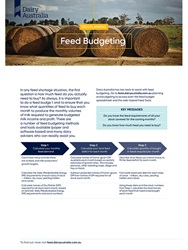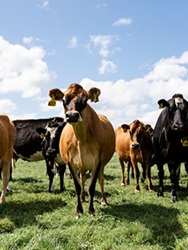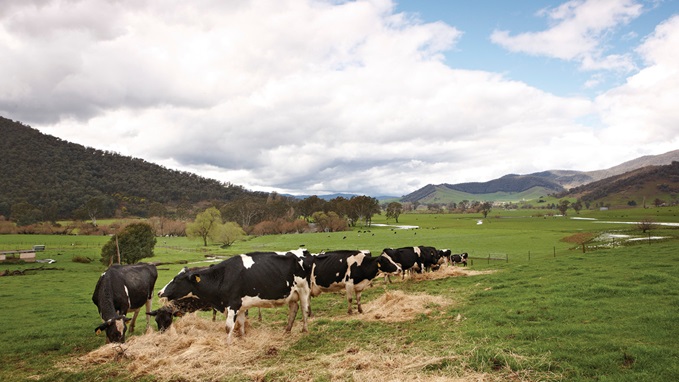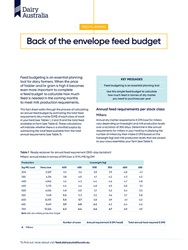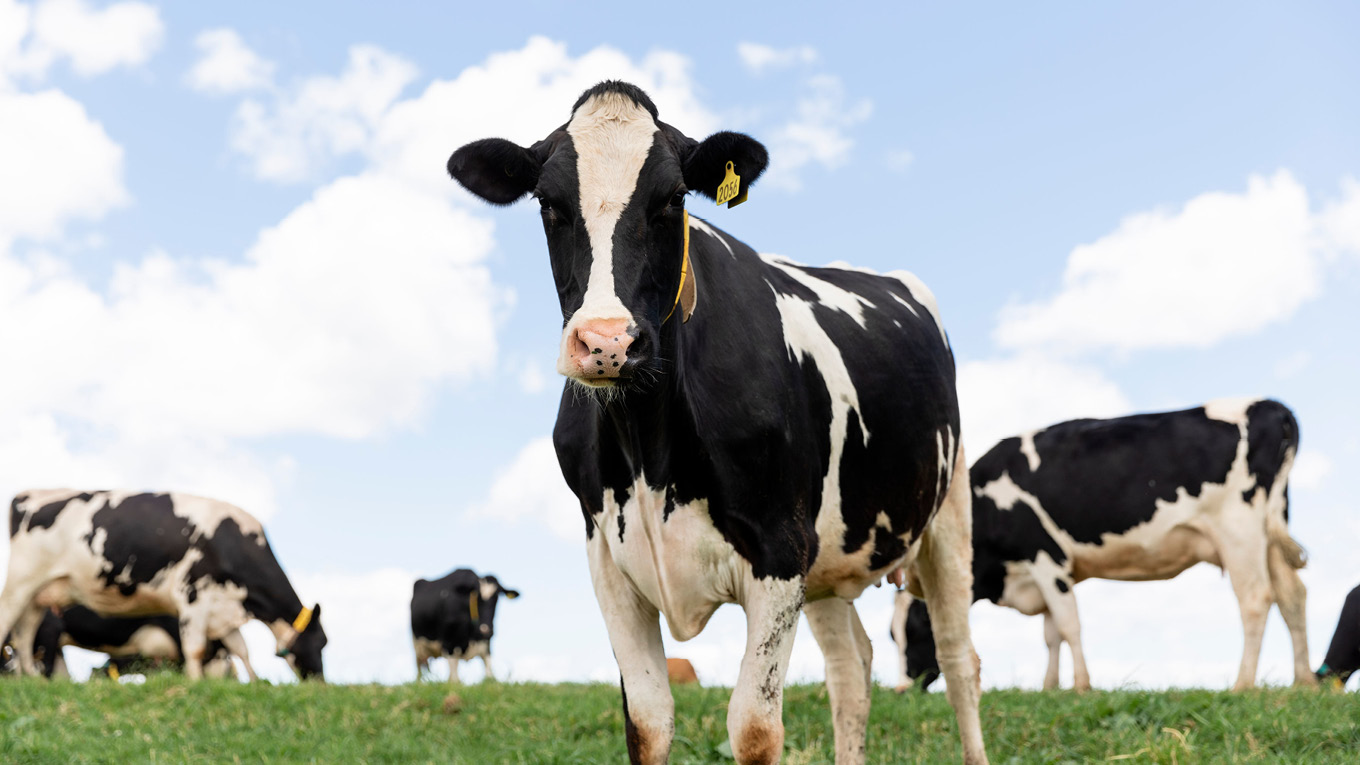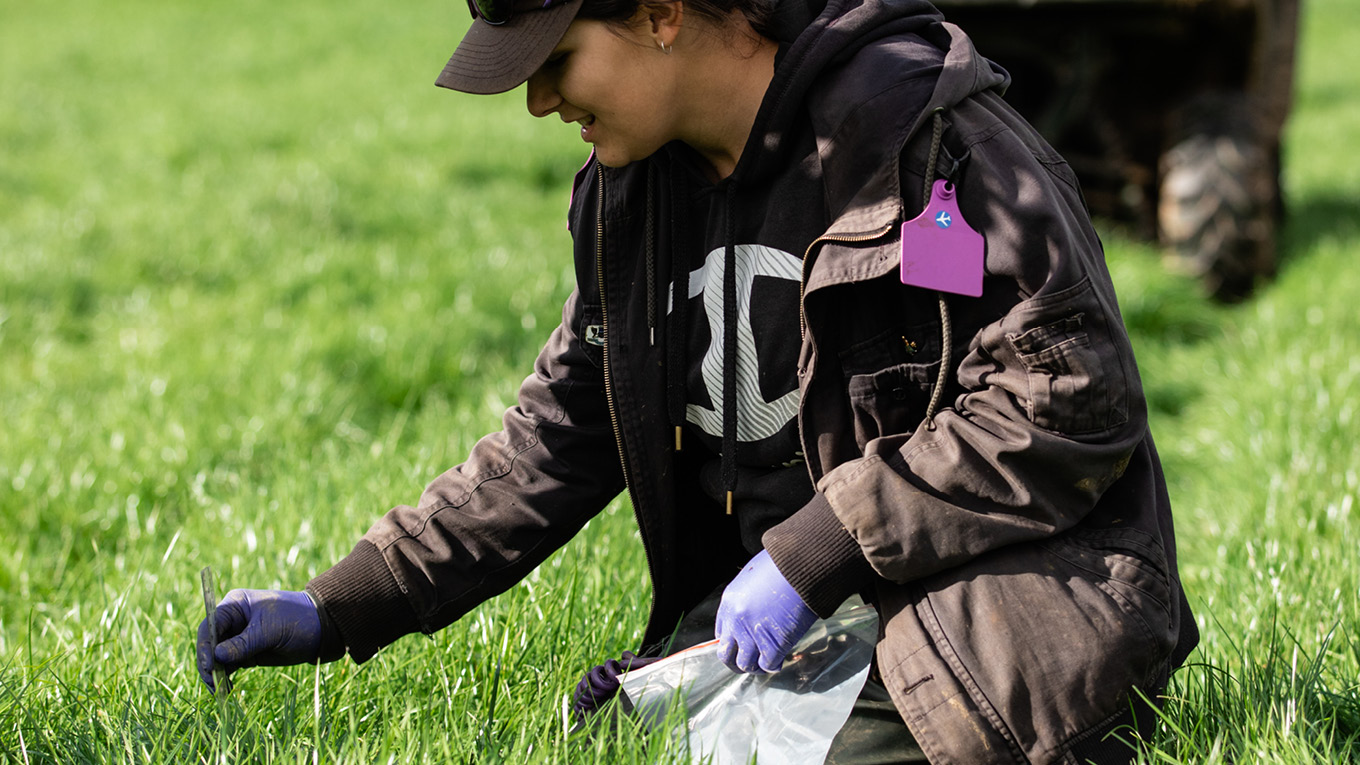Feed Budgeting
Having a feed budget is essential for dairy farmers to make the best decisions to manage feed requirements throughout the season. It is important to do a feed budget and to know what quantities of feed to buy each month to produce the monthly volumes of milk required in order to generate budgeted milk income and profit.
The three steps to conducting a feed budget are:
- Calculate the monthly feed demand
- Calculate the total feed deficit for each month
- Calculate the quantity of bought in feeds required per month
In periods of high fodder and grain prices, it is even more important to complete a feed budget to calculate how much feed is needed to meet milk production requirements.
This short video has some simple advice on how to feed budget.
Dairy Australia has a number of resources and tools which give farmers a range of ways to assess and manage their feed. These feed planning and resource management tools are backed by Australian feed and pasture data to most accurately reflect the needs of farmers.
This video explains Dairy Australia's feed budgeting resources.
More information on the importance of feed budgeting is available on Dairy Australia's Feed budgeting fact sheet.
Feed Budgeting Spreadsheet
Dairy Australia's Feed Budgeting Spreadsheet tool assists farmers to calculate the amount of bought-in feed required, using information such as herd size, grazing area, pasture type and growth rates and forage inputs.
Feed budgeting tool
Wastage can add to the amount of bought-in feed required and the cost of those feeds. Reducing wastage lowers the cost of feeds. For example, the cost of wasting 25% of a $14,000 load of hay is $3,500. Reducing this wastage from 25% to 10% would save $2,100, leaving a feed wastage cost of $1,400. More information about feed wastage can be found on the feed wastage page.
Feed Wastage
Tips for dairy farmers looking to reduce feed wastage and links to resources to help budget for and reduce the cost of feed wastage.
Back of the envelope feed budgeting
The Back of the envelope feed budget fact sheet helps to calculate how much feed needs to be purchased in tonnes of dry matter.
Using a farm example, this fact sheet demonstrates how to calculate the amount of feed required. The final part of the fact sheet has a worksheet for dairy farmers to work through, taking into account their own farm's circumstances.
Completing the worksheet gives the total herd feed deficit (dry matter [DM]) for the time period chosen (30 days or 60 days).
Information such as animal numbers, grazing area and feed on hand will be required to work out the feed deficit.
View and download the Back of the envelope feed budget fact sheet.
